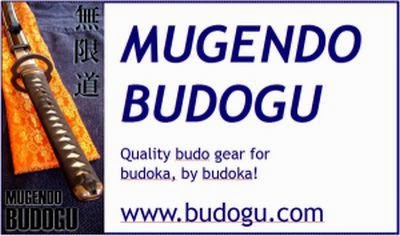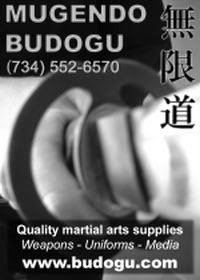We want to get the most
out of our training. We look up to people who train hard and constantly
push themselves. It seems obvious that the harder you train the better
you will be. In judo we respect the people who train harder, with more
intensity than anyone else. All that sweat dripping on the mat has to
mean something, doesn’t it?
I was practicing piano
and one of my weaknesses there struck me as identical to problems most of us
have in the dojo practicing budo. All practice is not equal. Some kinds
of practice give far superior returns on the time and effort invested than
other types of training. Poor training habits and techniques waste time.
Worse, they can lead to ingraining bad habits and techniques which
actually make us worse at what we are studying than we were before the training
I was practicing some
etudes (French for, get this, kata) that are fundamental exercises for
training the fingers on the piano. These are the boring exercises
everyone rushes through so they can get to the good stuff, the real music, the
real budo. Music etudes are like kihon waza practice in budo. These
are the fundamental movements that you have to practice beyond the ability to
do them properly, beyond the ability to do them properly without thinking about
them, to the point where you can’t do them incorrectly.
 |
| Etudes for piano : « FuseesLiszt » by Franz Liszt — Travail personnel. Wikimedia Commons – http://commons.wikimedia.org/wiki/File:FuseesLiszt.JPG#mediaviewer/Fichier:FuseesLiszt.JPG |
The tricky part is
practicing them correctly in the first place so you don’t develop bad habits
that slow you down later. The first, most common, and biggest mistake
with etudes and kihon waza is to treat them as mindless, boring exercises.
These exercises teach your body and mind the most critical foundations of
everything else you will do. If you try to rush them, or try to avoid
thinking about them by thinking about your laundry or your job or your friends
while doing them, you will likely be doing them wrong, and drilling this
wrongness into your bones.
To do basics correctly
as a beginner, you have to think about how you are doing them. When you
have stopped being a beginner, you probably don’t have to think about the
basics when you are doing more advanced things, but when you are practicing the
basics you still need to think about them. If you don’t, you risk letting
mistakes and poor technique slip in. You also miss all the benefits that
come from mindful practice. Be aware of what you’re doing. As you are
practicing basic techniques, look for things that can be improved. In 100
repetitions you’ll be lucky if you have 10 that you love. You’ll also be
lucky if you only have 10 that you hate. The rest will be somewhere in
between. The goal is to be aware of every repetition and to try and drag
your worst reps up to the quality of your mediocre ones, and the mediocre reps
up to the level of the best. Like all of budo, this is a never ending
activity, since as soon as you improve, you’ll start trying to reach a higher
level.
Another pitfall on the
practice path is rushing. If you’ve ever heard a young (or in my case not so
young) musician rush through a section of piece, you’ve heard how wrong rushing
can be. Don’t rush your practice, even if you don’t have much time.
Rushing through things is worse than not practicing. If you don’t practice, you
don’t improve, but you also don’t pick up bad habits. If you rush something you
are doing it at the wrong speed, which is just wrong. If you don’t have a lot
of time, just do what you have time to do properly. When you rush, correct form
is only the first thing that is lost. You also sacrifice the rhythm and feel of
proper technique, and you lose the awareness of what you are doing. In this
sort of situation, you’re training can only move backward as you reinforce bad
form, bad timing and poor thought.
One of the most popular
parts of Judo practice is also one of Judo practice’s biggest weaknesses. Randori,
or Judo style sparring, is fun, so much fun that often students would rather do
this than work on their basics. There are lot of things that can go wrong with
randori though. The first problem is all that fun. We are all susceptible
to this one. It’s easy to spend all our time doing the fun parts of training,
whatever it is, and neglect the parts that don’t grab our attention and gratify
our hearts. This is true in all arts, even in koryu budo where there is very
little sparring type practice. There are some kata that are just more
interesting, and others that frustrate me until I am ready to scream because I
just never seem to get them right.
One particular form this
trap takes is practicing what we are good at. We enjoy practicing things we are
good at much more than the parts that we haven’t mastered yet. I love doing harai
goshi and tai otoshi in judo because I do them better
than anything else. That’s exactly why should limit my practice of them though.
The fact that I can do them better than anything else should tell me how much
more I need to be practicing everything else. Spend most of your time
practicing what you aren’t good at. That’s where you’ll improve the most.
The second problem with
randori and other sparring practices is the tendency for people to go faster
and faster as the randori session continues. Randori is a form of practice, not
a competition to see who is better. People usually forget this point within 10
seconds of the start of a session. As soon as you stop thinking about randori
or sparring as practice and start treating it as another sort of competition,
it’s practice value plummets. You stop trying your weaker techniques that you
should be polishing, and switch to your favorite techniques. People also start
getting defensive because they don’t want to lose. In judo this means all sorts
of bad postures and muscling to prevent throws. Instead they should be working
on ingraining good posture and movement which will allow them to execute good,
effective technique.
The third problem I see
is that people don’t go into randori with a plan to use it to get better. Go
into a randori session with a plan for what you want to practice and improve.
Don’t worry about winning and losing. It’s practice, so you getting better is
what constitutes winning, not beating the other guy. If all you do is worry
about winning, you’ve already lost the chance to improve, and worse, you’re
likely to pick up bad habits in the effort to win. PIck a technique you need to
work on and focus on finding where that technique fits in the movement. Or just
work on how you move and sense your partner. Take the time to develop an
understanding how people move and react. These sorts of practices will make
your budo much better, polish your skills and improve your fundamentals.
 | |
| Early 20th century randori |
PIck a speed and
intensity for your practice that suits the points you want to work on. Slow is
great for some things. Fast and light might work better for polishing something
like foot sweeps. Think about what you want to get out of a randori or
sparring session, and how you will have to train to get that. Don’t just rush
in and throw everything you are working on to the floor.
When you go all out to
win during practice, the best you can hope for is that you win without
developing any bad habits. You don’t get any better. The worst that can
happen is that you develop and ingrain bad habits from trying to win and not
lose, while developing a counterproductive attitude about winning and losing.
Training at less than
100% intensity is tough, because we associate training hard with effective
training. This is true when you are working on cardio or strength
development. You only improve your physical condition when you push the
limits of what you can do. The more you sweat, the harder you work, the
stronger you get and the more your stamina increases.
When you are working on
technique however, hard training gets in the way of good training and can turn
into bad training. Adding muscle, as I keep rediscovering, does not
improve technique. Oddly though, adding technical skill does make muscle more
effective. Interesting how that works. In
order to make your physical strength as useful and effective as possible, you
have to work at practicing without it. Once the technique is smooth and fluid,
then you can try adding a little speed and strength at the proper moment for those to be useful. Strength and speed are
not always benefits. Using them at the
wrong time is a waste of energy and can destroy the effectiveness of a
technique. I have lots experience at
finding ways to blow a perfectly good technique, and adding strength or speed
at the wrong moment is one of the best.
 | |||
| Hard training is great for strength, but what does it do for technique? |
There’s one other area
where the temptation to practice too hard is too frequently succumbed to. That’s when practicing “real” techniques, like
self-defense techniques. The allure of
doing the technique as hard and as fast as we can because this is for
self-defense and we want to be sure it will work is a powerful one. It’s even more irresistible than my wife’s
cookies fresh out of the oven on the cooling rack when she’s left the
room. The problem with this is the same
as in randori and sparring. We can start
relying on bad techniques and too much muscle and speed to get by. This is fine until you run into someone with
good technique, or even just someone faster or stronger.
A better method is to
practice the technique at a very low intensity. As you get more comfortable at
it, have your partner increase the intensity slightly. When you can do the technique calmly and
smoothly at the new intensity, have your partner step it up again. Eventually you’ll be able to do the technique
calmly and smoothly with your partner attacking as intensely as they can. You’ll have good technique, and you’ll be
accustomed to maintaining calm and relaxed, effective technique even under intense,
strong attacks. If you jump straight
into working at high intensity levels it will take much longer to master the technique,
if you ever do. More likely you will
develop bad habits to compensate for the skill you don’t have yet, which will
just make developing the skill that much more difficult.
Train slow and work up
to it. It’s easy to practice things
wrong. The temptation is always there to
start practicing harder, faster and more intensely than your technique is ready
for. Don’t give in. Practice right so you truly learn how to do
the techniques and master you art.
P.S.
This site had a very nice article
about practicing from a musical perspective.
http://www.musicforbrass.com/articles/art-of-practicing.html





